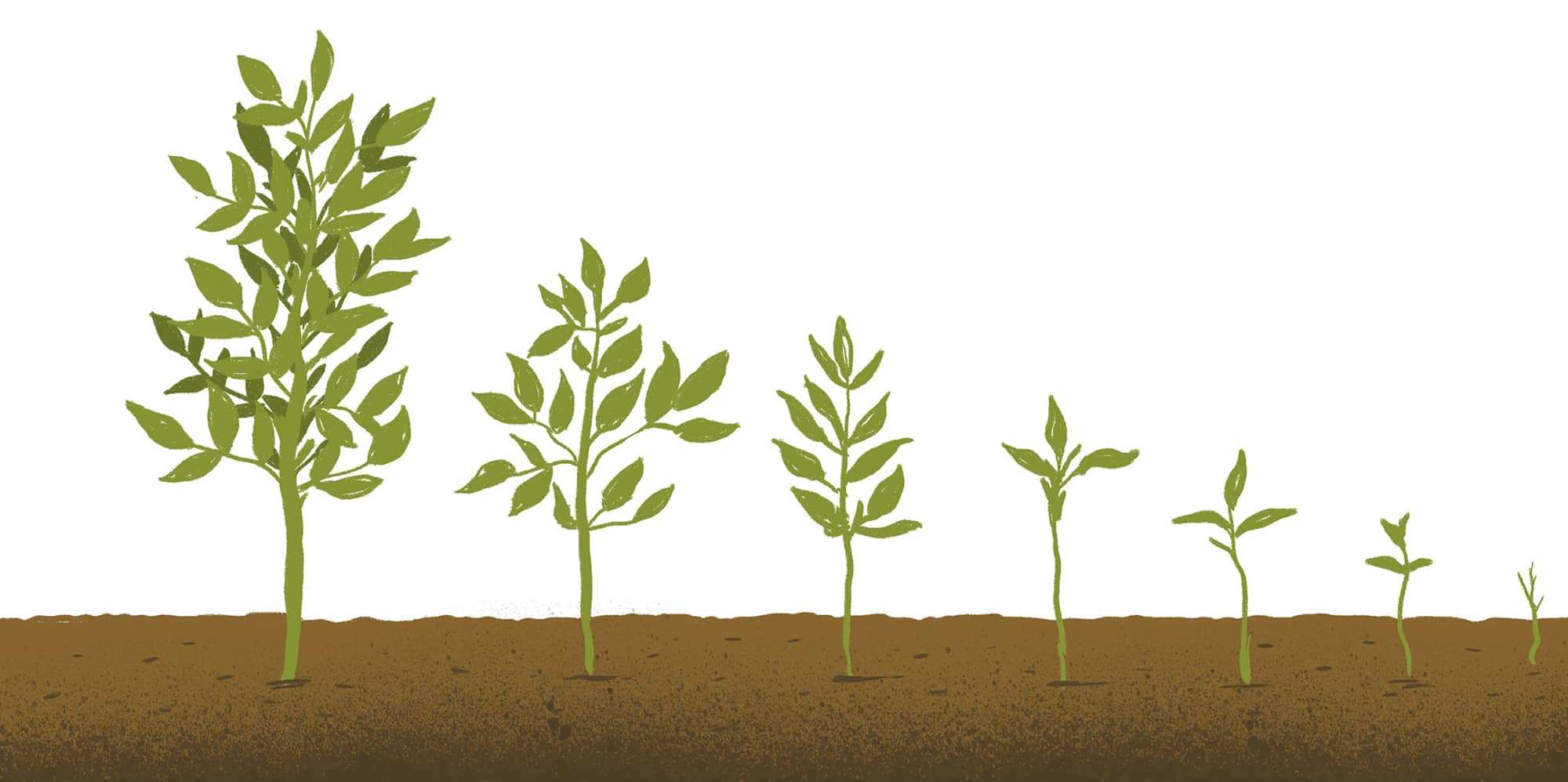Slow Down with Green
Numerous studies have shown that proximity to a plant can make humans healthier and less stressed, promoting general wellbeing and happiness. There’s even a treatment for mental illness known as horticultural therapy; plants pick us up when we’re low.

PLANTS FOR WELLBEING
Having a living thing to care for gives us responsibility. If we don’t water it, prune it or expose it to light, then it may die. Taking care of the plant and appreciating how it is growing is mindful in itself: the process of looking after your plants can bring you straight into the present. Focus on the leaves, study the stems and veins and watch how they spread across the plant. Spray the plant, wipe down the leaves, nurture it, love it. The plant will be stronger, and the process will create a quiet, positive space in which to de-stress.
Looking after plants is not as straightforward as it may seem; I speak from experience. It takes time to know whether to water too much or too little, whether it will wilt or flourish near a heat source, and what level of light will suit it best. It’s a skill that will be expressed in life itself: seeing a plant you’ve tended put out new leaves is a message from another living thing that you’ve paid attention. Spending a little time on plants can go a long way for wellbeing in the home.
OUTDOOR PLANTING
Even if you live in a city-centre apartment with a tiny balcony, you could plant tomatoes in the spring, herbs for year-round culinary use, or colourful flowers in pots to add interest to the space. If there is no outdoor space, you could use window boxes to grow and nurture plants and flowers. You can plant for the seasons, letting your flowers and herbs show you how time goes on.
Whatever your planting space, different seasons call for different kinds of cultivation, so it’s a call to be in touch with the changes in weather and daylight. Each week you can plan a set time to take care of your plants, being alert to their changing needs. While you’re about it, if you have an outdoor space, you can incorporate planting that welcomes wildlife, connecting you even more with nature. The best herb varieties to encourage bees and butterflies are lavender, mint, rosemary, thyme and sage; all hardy plants, low maintenance and easy to keep, whether in pots or in the ground.
A REFUGE FOR THE MIND
Creating an indoor garden is not a major undertaking, but the addition of attractive houseplants can bring a new source of pleasure into the home. Over time, you can see the changes as your plants grow and develop new leaves and blooms. You could even propagate new shoots and give the baby plants to friends and family. (Although do bear in mind that certain plants are poisonous to humans or animals, and keep them well out of reach if this might be the case. Plants, like every other living thing, need to be treated with respect.)
When you feel like things are getting on top of you in life, nurturing plants can help you get back in control. While you will never be able to fully have your life in order, you can decide how to arrange your plants, what vegetables you want to grow, where the pot plants can move to, and how frequently you feed and water them. Bad day at work? Spend some time looking after your indoor plants, wiping off the dust and checking they are not too dry. Outside, cut back the deadheads, turn over the soil and pull up the weeds, leaving a clean canvas for your other plants to thrive. The act of caretaking is healing in itself: by handling your plants with gentleness and skill, care and attention, you are literally growing yourself a better living environment. You do it for them and for you at the same time, experiencing a balance between being the one who cares and the one who is cared for. Look after your botanical friends, and let them cheer you up.